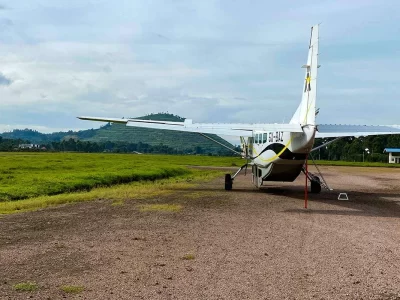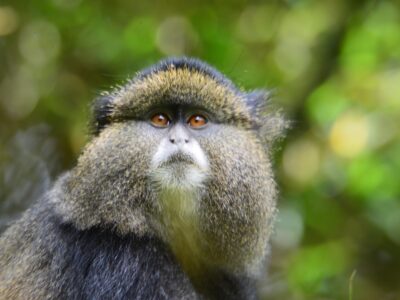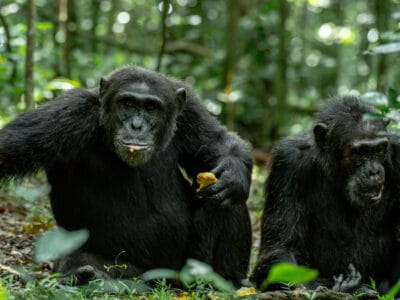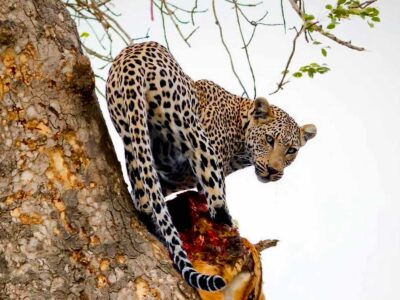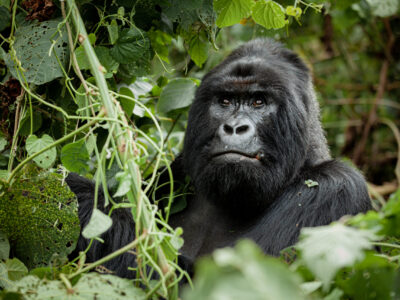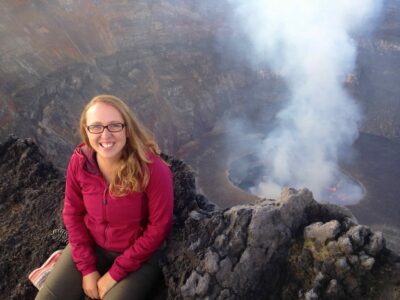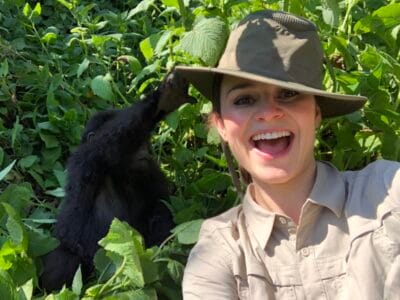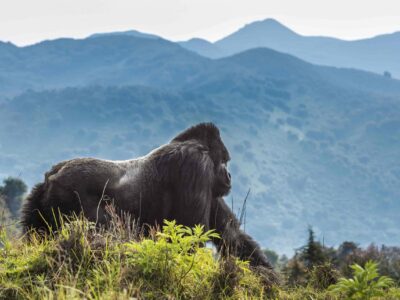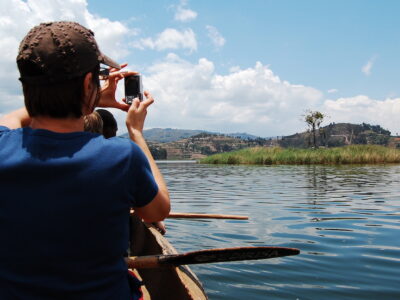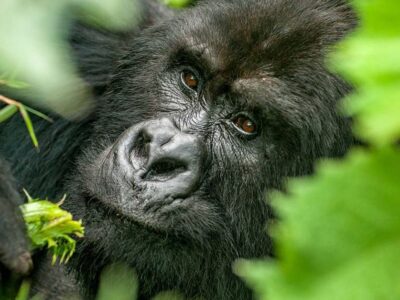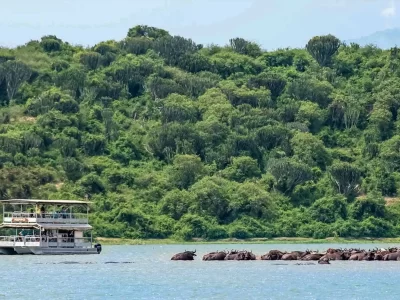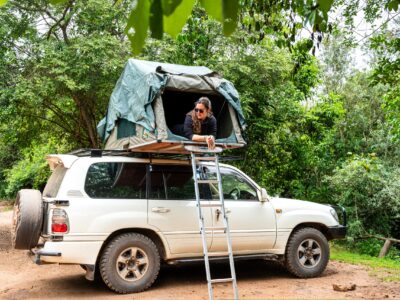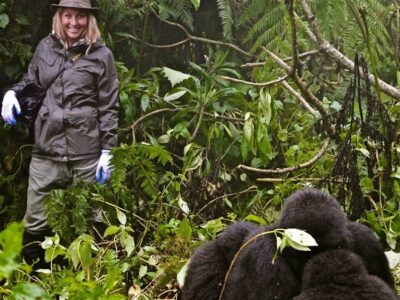An In-Depth Guide to Gorilla Trekking in Uganda & Rwanda
A journey to encounter mountain gorillas in their natural habitat is a profound and unforgettable wildlife experience. Tucked away in the dense montane forests of East and Central Africa, these gentle giants offer a glimpse into a world untouched by time. Uganda and Rwanda are the premier destinations for this incredible adventure, each offering a unique and compelling trekking experience. This guide provides a comprehensive overview of everything you need to know to plan your gorilla trekking safari in Uganda and Rwanda.
The Mountain Gorillas: A Story of Conservation
Mountain gorillas (Gorilla beringei beringei) are a critically endangered species, with just over 1,000 individuals remaining in the wild. Their populations are concentrated in two isolated regions: the Virunga Massif, a volcanic mountain range spanning Rwanda, Uganda, and the Democratic Republic of Congo, and Uganda’s Bwindi Impenetrable National Park.

Decades of dedicated conservation efforts, funded in large part by revenue from gorilla tourism, have seen their numbers slowly but steadily increase. By choosing to go on a gorilla trek, you are directly contributing to the survival of these magnificent creatures and supporting the local communities that are their guardians.
Choosing Your Destination: Uganda vs. Rwanda
The decision between Uganda and Rwanda for your gorilla trekking adventure will depend on several factors, including your budget, fitness level, and the overall travel experience you seek.
| Feature | Uganda | Rwanda |
| Primary Trekking Location | Bwindi Impenetrable National Park & Mgahinga Gorilla National Park | Volcanoes National Park |
| Permit Cost | $800 USD (as of 2024/2025) | $1,500 USD |
| Terrain | Densely forested, steep, and can be challenging. “Bwindi” means “impenetrable.” | Generally more open and less dense forest on volcanic slopes. |
| Travel Time from Airport | Long drive (8-10 hours) from Entebbe (EBB) to Bwindi. | Short drive (2-3 hours) from Kigali (KGL) to Volcanoes National Park. |
| Number of Gorilla Families | Over 20 habituated families in Bwindi, 1 in Mgahinga. | Around 12 habituated gorilla families. |
| Overall Cost | More budget-friendly due to lower permit fees and accommodation costs. | Generally a more high-end and luxurious experience. |
Gorilla Trekking in Uganda: The Pearl of Africa
Uganda is home to roughly half of the world’s mountain gorilla population, primarily in Bwindi Impenetrable National Park, a UNESCO World Heritage Site. A smaller population resides in Mgahinga Gorilla National Park, which is part of the larger Virunga Conservation Area.
Bwindi Impenetrable National Park
Bwindi is a vast and ancient rainforest, offering a rugged and immersive trekking experience. The park is divided into four sectors for gorilla trekking:
- Buhoma: The northernmost and most popular sector, known for its relatively easier treks.
- Ruhija: Located in the east, offering a mix of challenging and moderate treks.
- Rushaga: In the south, with the highest number of habituated gorilla families, providing more trekking options.
- Nyakagezi: Also in the south, known for its scenic beauty and challenging terrain.
Mgahinga Gorilla National Park
Mgahinga is part of the Virunga Massif and is home to one habituated gorilla family. This park offers a chance to see golden monkeys as well and provides a less crowded trekking experience.
The Ugandan Trekking Experience
Treks in Uganda can be more physically demanding due to the dense vegetation and steep inclines. The experience is often described as more adventurous and “wild.” The longer travel time from the international airport to the parks allows visitors to see more of the Ugandan countryside.
Gorilla Trekking in Rwanda: The Land of a Thousand Hills
Rwanda offers a more streamlined and accessible gorilla trekking experience in Volcanoes National Park, part of the Virunga Massif. The park is a stunning landscape of dormant volcanoes and lush bamboo forests.
Volcanoes National Park
The park is easily accessible from the capital city of Kigali. The treks here are generally at a higher altitude than in Bwindi, but the terrain can be more open. The well-established tourism infrastructure in Rwanda often translates to a more seamless and luxurious experience.
The Rwandan Trekking Experience
While the permit is significantly more expensive, the ease of access and the quality of lodges make Rwanda an attractive option for those with a limited amount of time or a preference for higher-end travel. The open terrain can sometimes allow for better photography opportunities.
Planning Your Gorilla Trekking Safari
Gorilla Permits: The Golden Ticket
 A gorilla permit is a mandatory requirement for trekking in both countries. It grants you one hour with a habituated gorilla family.
A gorilla permit is a mandatory requirement for trekking in both countries. It grants you one hour with a habituated gorilla family.
- Booking: Permits should be booked well in advance, especially during the peak season (6 months to a year is recommended). You can book them through the Uganda Wildlife Authority (UWA) in Uganda or the Rwanda Development Board (RDB) in Rwanda, though using a reputable tour operator is often easier.
- Cost Includes: The permit fee includes park entrance fees, expert guides and trackers, and security.
The Best Time to Go
Gorilla trekking can be done year-round, but the best time is during the two dry seasons:
- Long Dry Season: June to September
- Short Dry Season: December to February
The dry seasons offer more comfortable trekking conditions with less mud and rain. However, trekking in the wet seasons (March to May and October to November) can be rewarding with fewer crowds and lush, green landscapes.
What to Expect on Trekking Day

Your day will begin early with a briefing at the park headquarters. You will be assigned to a gorilla family and a small group of no more than eight trekkers. The trek itself can last anywhere from 30 minutes to several hours, depending on the location of the gorillas.
Experienced trackers go ahead of your group to locate the gorilla family. Once you find them, you will have one magical hour to observe them as they feed, play, and interact with each other. This is a strict rule to minimize disturbance to the gorillas.
Gorilla Trekking Rules and Regulations
To protect the gorillas and ensure your safety, you must adhere to the following rules:
- Maintain a distance of at least 7 meters (23 feet) from the gorillas.
- Do not trek if you are sick. Gorillas are susceptible to human diseases.
- Keep your voice low.
- Do not eat or drink near the gorillas.
- Flash photography is not allowed.
- The maximum time spent with the gorillas is one hour.
- Children under the age of 15 are not permitted to trek.
What to Pack
- Sturdy, waterproof hiking boots with good ankle support.
- Long-sleeved shirt and long trousers to protect against scratches and insect bites.
- Waterproof rain jacket or poncho.
- Gardening gloves to protect your hands from thorny plants.
- A small backpack to carry water, snacks, and your camera.
- Insect repellent with DEET.
- Sunscreen, sunglasses, and a hat.
- A camera with extra batteries and memory cards.
- Binoculars.
Beyond the Gorillas
Both Uganda and Rwanda offer a wealth of other incredible experiences to complement your gorilla trek.
- In Uganda: Explore Queen Elizabeth National Park for classic safari game drives, go chimpanzee trekking in Kibale Forest National Park, or marvel at the powerful Murchison Falls.
- In Rwanda: Track golden monkeys in Volcanoes National Park, explore the canopy walkway in Nyungwe Forest National Park, or relax on the shores of Lake Kivu.
A gorilla trekking safari in Uganda or Rwanda is more than just a trip; it is an intimate encounter with one of our closest relatives and a powerful reminder of the importance of conservation. Whichever destination you choose, the experience of looking into the eyes of a mountain gorilla will stay with you forever.
To book a gorilla safari in Uganda or Rwanda today- simply contact us now by sending an email to [email protected] or call us now on +256-700135510 to speak with the reservations team.



